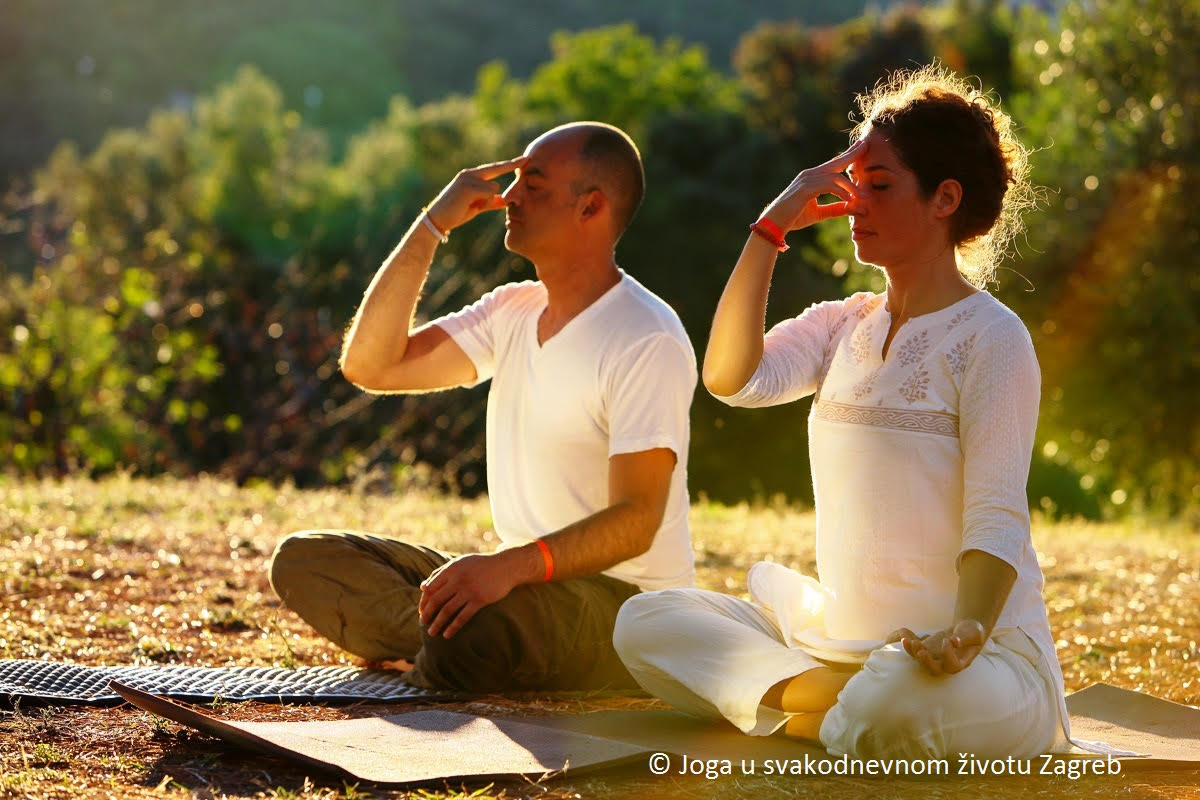
Pranayama, in addition to Asanas and meditation, is a well-known and often-mentioned technique when talking about yoga. Many athletes have made it very popular, especially divers who practice pranayama regularly because they achieve much better results. Pranayama is important for all of us,
especially at the present moment, in the prevention and alleviation of some of the symptoms that accompany COVID-19: weakened lungs, shortness of breath, lack of energy and fatigue.
Pranayama is often explained as breath control that calms the mind and has a good effect on the lungs. This is one part of the benefits of pranayama; the other is the empowerment and purification of life energy. Prana means just that--life energy. We can say that both aspects work favorably in our response to the virus and the current situation, but also otherwise in life.
Read more about pranayama
Then, follow this practice. First of all, one needs to master full yogic breathing, because we mostly breathe shallowly, quickly and with the upper part of the lungs. This causes a lack of oxygen in the body, but also anxiety, nervousness and stress.
So, begin with this basic breathing exercise:
The starting position can be (depending on the situation) standing with legs slightly apart, lying on your back or sitting comfortably with your back straight. Close the eyes. The arms are relaxed next to the body. With the inhalation, slowly raise your arms to the side and cross them over your head. Follow the breath, do not intentionally affect it; the breath follows the movement. With the exhalation, slowly return the arms to the body. The movement lasts as long as the breath; do not strain. Repeat the exercise 10 times. You will notice how, in different positions of the arms, certain parts of the breathing process are activated. The breathing consists of three parts: abdominal breathing, chest breathing and clavicular breathing (shallow breathing). The yogic way of breathing connects all three parts into a whole. This exercise calms, relaxes, deepens breathing and is good as a preparatory exercise for Pranayama.
Pranayama Nadi Shodhan, first level
It is best to practise Pranayama after Asanas, but you can also practice it independently. Starting position: comfortable, upright sitting position. You can sit on the floor with crossed legs, placing a small pillow under the buttocks. If this position is not comfortable for you, sit on a chair without a backrest.
Starting position: comfortable, upright sitting position. You can sit on the floor with crossed legs, placing a small pillow under the buttocks. If this position is not comfortable for you, sit on a chair without a backrest.
Exercise description: Sit relaxed but upright, and concentrate for a few minutes on normal breathing. Do not affect the breathing; just be aware of it. Lift the right hand, place the index finger and middle finger at the eyebrow centre (Pranayama Mudra) and close the right nostril with the thumb. Breathe through the left nostril 10 times. The breath is slightly deeper than normal and directed into the abdomen. Concentration is on flow of breath. The breathing in Pranayama should be without any sound. After 10 inhalations and exhalations, open the right nostril again and close the left nostril with the ring finger. Breathe through the right nostril 10 times; the breath is slightly deeper than normal and into the abdomen. Return the hand to the knee and observe the normal flow of the breath for a few minutes. After a while, you can increase the number of breaths to 20 through each nostril.
Benefits of Nadi Shodhan: Purifies the blood and respiratory system. Enriches the blood with oxygen. Strengthens the respiratory system and balances the nervous system. Helps to relieve nervousness and headaches.
After a few months, you can begin the second level of Pranayama, but as with anything that you want to do more deeply, seek the help of a yoga instructor.
We hope you have included in your daily routine at least some of the simple tips from this series. If you haven't by now, you can always start ... today.
Sadhvi Anand Puri
Yoga in Daily Life
+385 91 505 2255
www.yoga-in-daily-life.hr
This email address is being protected from spambots. You need JavaScript enabled to view it.
